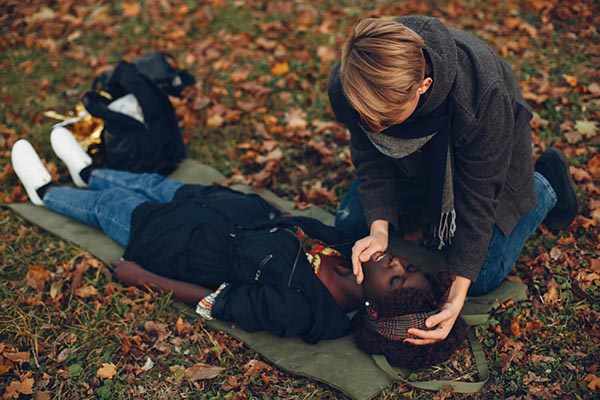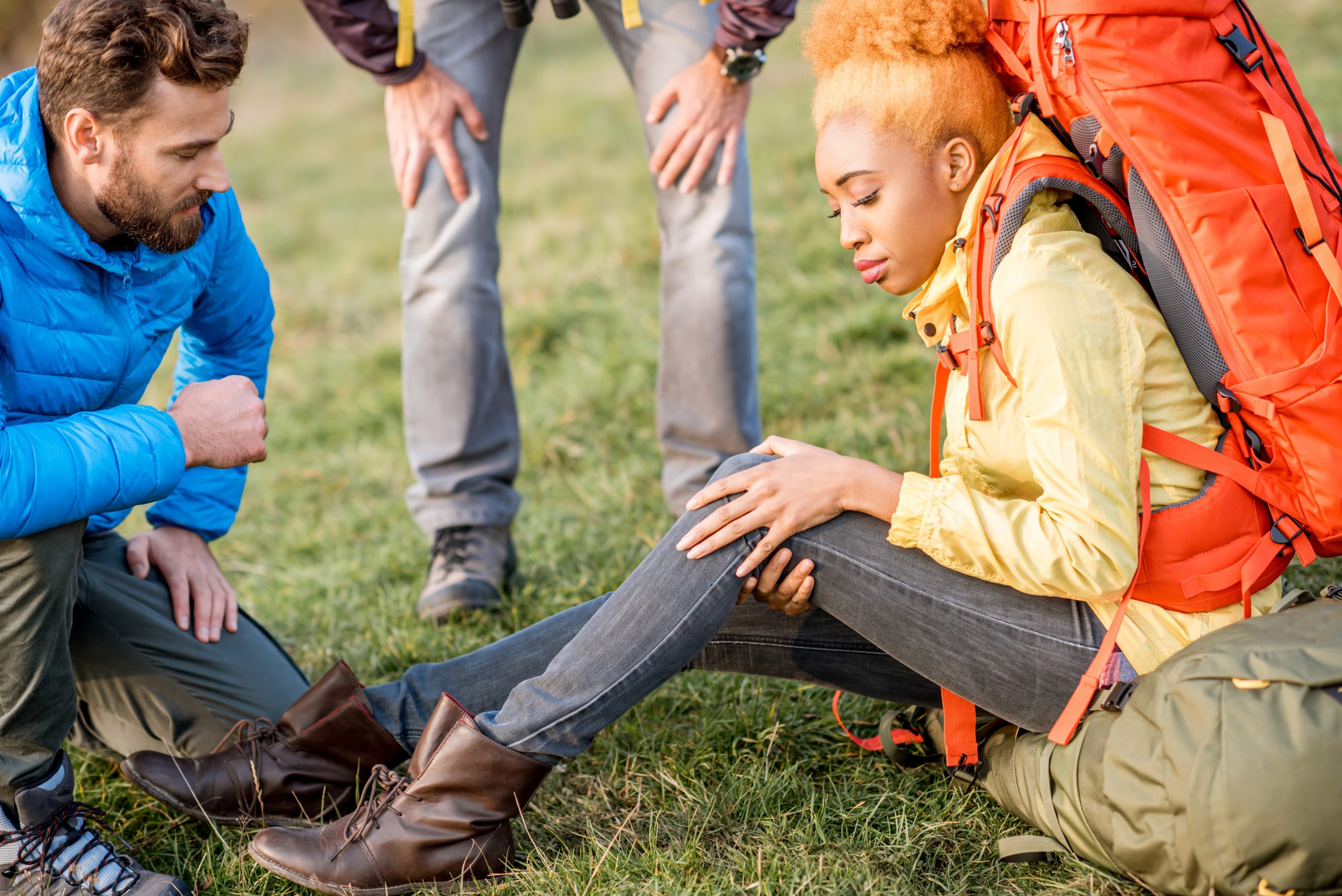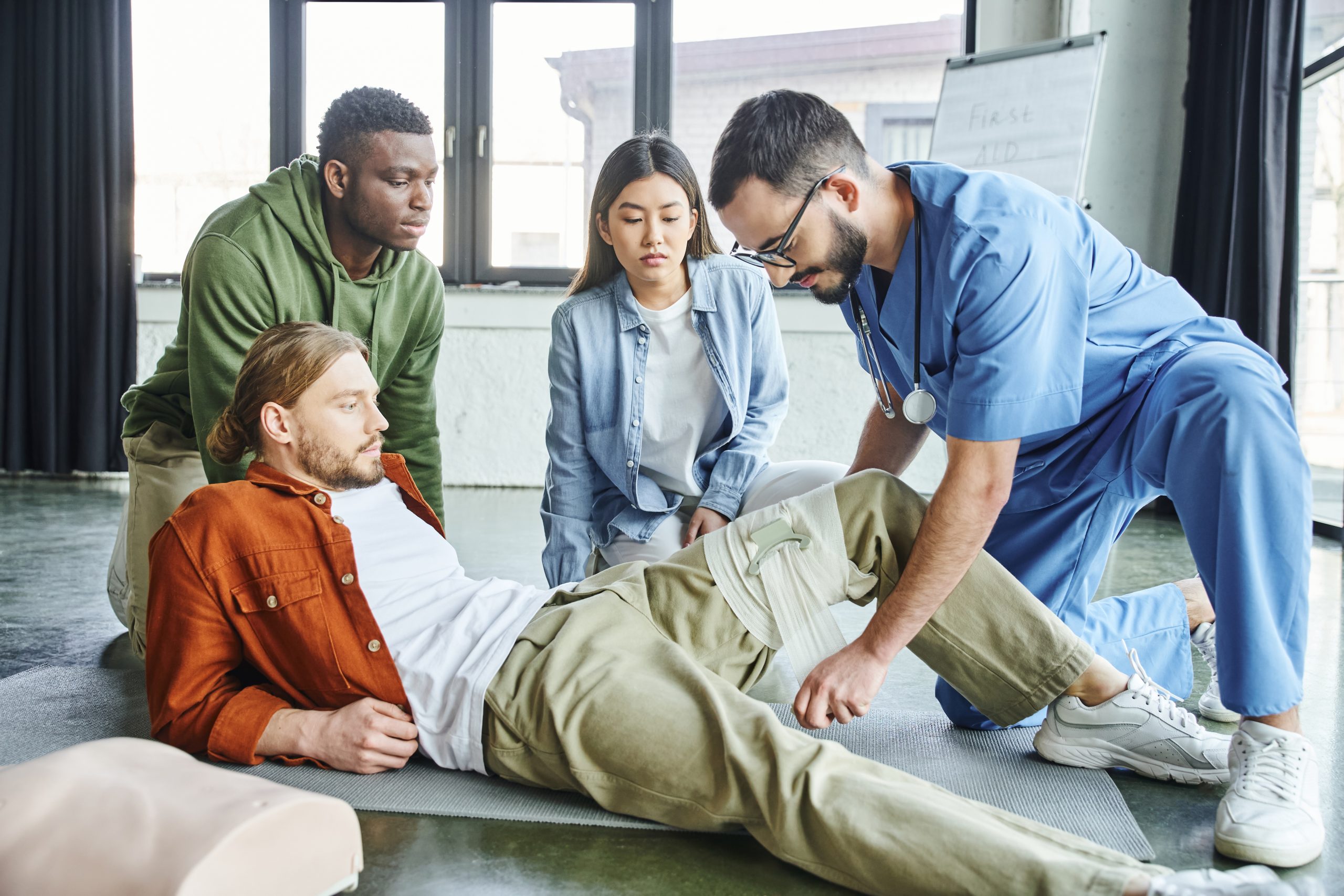
Accidents are an inevitable part of life, and knowing how to handle common injuries like cuts, bruises, and sprains can make a significant difference in recovery. First aid is not just for medical professionals; it’s essential knowledge for everyone. This guide will walk you through the basics of first aid for these common injuries, empowering you to act confidently when accidents happen.
First aid is the immediate help given to an injured person before professional medical assistance arrives. It’s crucial to have a basic understanding of first aid to provide effective care and potentially prevent further harm. Let’s explore the key components of first aid for cuts, bruises, and sprains.

A well-stocked first aid kit is your first line of defense against minor injuries. Here are some essential items to include:
Having these items readily available ensures you can handle most minor injuries effectively.
Cuts are among the most common injuries and can range from minor nicks to deep lacerations. Proper first aid can prevent infection and promote faster healing.
Seek professional medical help if:
Bruises occur when small blood vessels break under the skin, usually due to a bump or fall. They can be painful and unsightly but are generally not serious.
Consult a healthcare professional if:
Sprains occur when ligaments, the tissues connecting bones, are stretched or torn. They commonly affect ankles, wrists, and knees. Proper first aid can alleviate pain and promote recovery.

Seek medical attention if:
While accidents can’t always be avoided, taking certain precautions can reduce the risk of cuts, bruises, and sprains.
Understanding and applying first aid basics for common injuries like cuts, bruises, and sprains is invaluable. With the right knowledge and tools, you can provide immediate care, reduce pain, and promote recovery. Remember to consult a healthcare professional when necessary, and keep your first aid kit stocked and accessible. By taking these proactive steps, you contribute to a safer environment for yourself and those around you.
Empower yourself with the skills to handle emergencies effectively! Enroll in CPR and First Aid classes today to learn life-saving techniques that can make a difference in critical situations. Whether you’re a parent, caregiver, or simply want to be prepared, these classes provide essential knowledge and hands-on experience.
Don’t wait for an emergency to act—take the first step towards being a confident responder. Contact CPR Classes Near You to find a course that fits your schedule and location. Your preparedness can save lives!
Our primary goal is to ensure that you receive a top-quality CPR/First Aid certification. With our in-person training in Austin, you can learn CPR and BLS in just one class. Your presence is all that’s needed to continue with your lesson! During your session, you will complete all the live-training components necessary to ensure you receive your AHA Healthcare Provider certification card.
Our CPR Classes in Austin are discounted to $59.95 (saving you $20), and our CPR + First Aid Class is offered at $79.95 (also saving you $20). When looking for CPR Classes, ensure to check for the American Heart Association seal. Other sites might seem cheaper but frequently lack the official training credentials demanded by employers.
Upon successful completion of the course, you will obtain a CPR certification that is valid for two years. The AHA CPR certification is recognized with the highest acceptance rate among employers nationwide.
Indeed! Enroll in any CPR Certification Austin BLS course to extend your certification for an additional two years. The in-person BLS course and the Renewal Class are identical.
Anyone capable of completing the course independently should consider pursuing CPR training and CPR Certification. There is no minimum age restriction for obtaining a CPR certification in Austin through the American Heart Association (AHA)..
CPR training needs to be carried out in person to guarantee its effectiveness. Our experienced instructors offer an engaging and dynamic learning experience. Typically, employers do not recognize CPR certifications that are obtained solely through online courses.
All authorized American Heart Association training centers are obligated to display the entire video. After a three-hour session with CPR Classes Near Me Austin, your BLS CPR eCard will be promptly issued by the instructor on the same day!